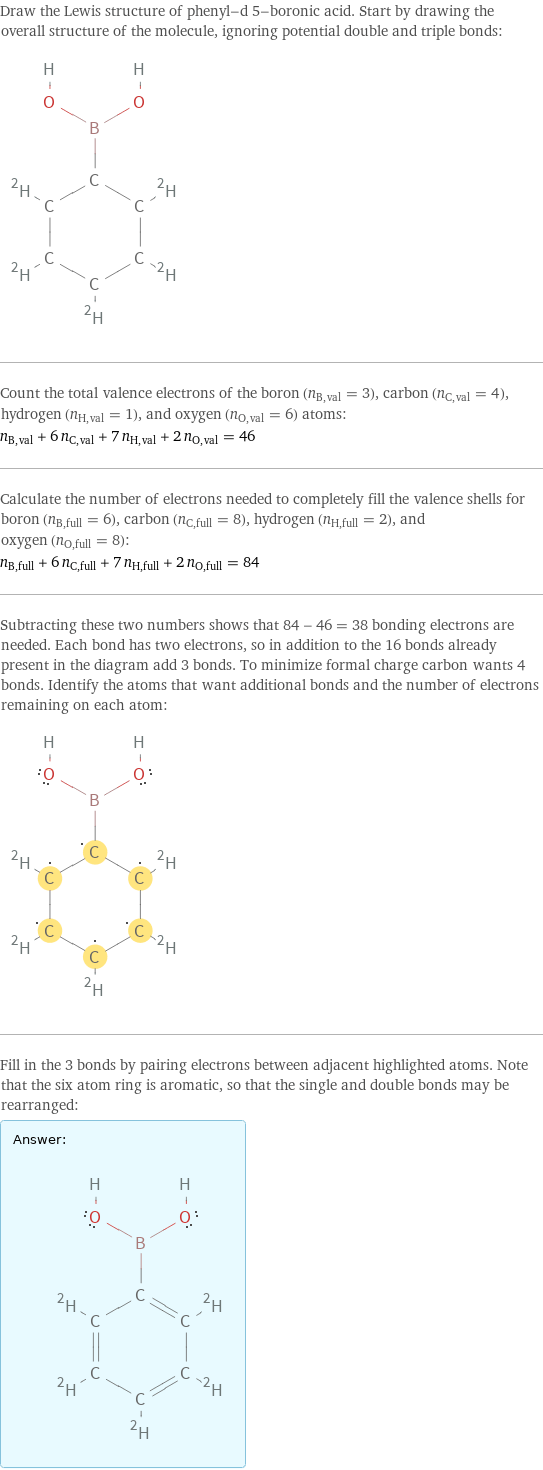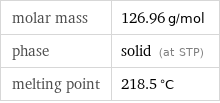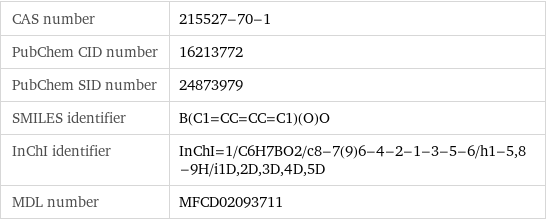Input interpretation

phenyl-d 5-boronic acid
Chemical names and formulas

formula | C_6D_5B(OH)_2 Hill formula | C_6H_2D_5BO_2 name | phenyl-d 5-boronic acid IUPAC name | (2, 3, 4, 5, 6-pentadeuteriophenyl)boronic acid alternate names | (2, 3, 4, 5, 6-pentadeuteriophenyl)boronic acid mass fractions | O (oxygen) 0.252% | C (carbon) 0.568% | B (boron) 0.0851% | H (hydrogen) 0.0952%
Lewis structure

Draw the Lewis structure of phenyl-d 5-boronic acid. Start by drawing the overall structure of the molecule, ignoring potential double and triple bonds: Count the total valence electrons of the boron (n_B, val = 3), carbon (n_C, val = 4), hydrogen (n_H, val = 1), and oxygen (n_O, val = 6) atoms: n_B, val + 6 n_C, val + 7 n_H, val + 2 n_O, val = 46 Calculate the number of electrons needed to completely fill the valence shells for boron (n_B, full = 6), carbon (n_C, full = 8), hydrogen (n_H, full = 2), and oxygen (n_O, full = 8): n_B, full + 6 n_C, full + 7 n_H, full + 2 n_O, full = 84 Subtracting these two numbers shows that 84 - 46 = 38 bonding electrons are needed. Each bond has two electrons, so in addition to the 16 bonds already present in the diagram add 3 bonds. To minimize formal charge carbon wants 4 bonds. Identify the atoms that want additional bonds and the number of electrons remaining on each atom: Fill in the 3 bonds by pairing electrons between adjacent highlighted atoms. Note that the six atom ring is aromatic, so that the single and double bonds may be rearranged: Answer: | |
Basic properties

molar mass | 126.96 g/mol phase | solid (at STP) melting point | 218.5 °C
Units

Non-standard atom properties

H-2 | 5
Chemical identifiers

CAS number | 215527-70-1 PubChem CID number | 16213772 PubChem SID number | 24873979 SMILES identifier | B(C1=CC=CC=C1)(O)O InChI identifier | InChI=1/C6H7BO2/c8-7(9)6-4-2-1-3-5-6/h1-5, 8-9H/i1D, 2D, 3D, 4D, 5D MDL number | MFCD02093711